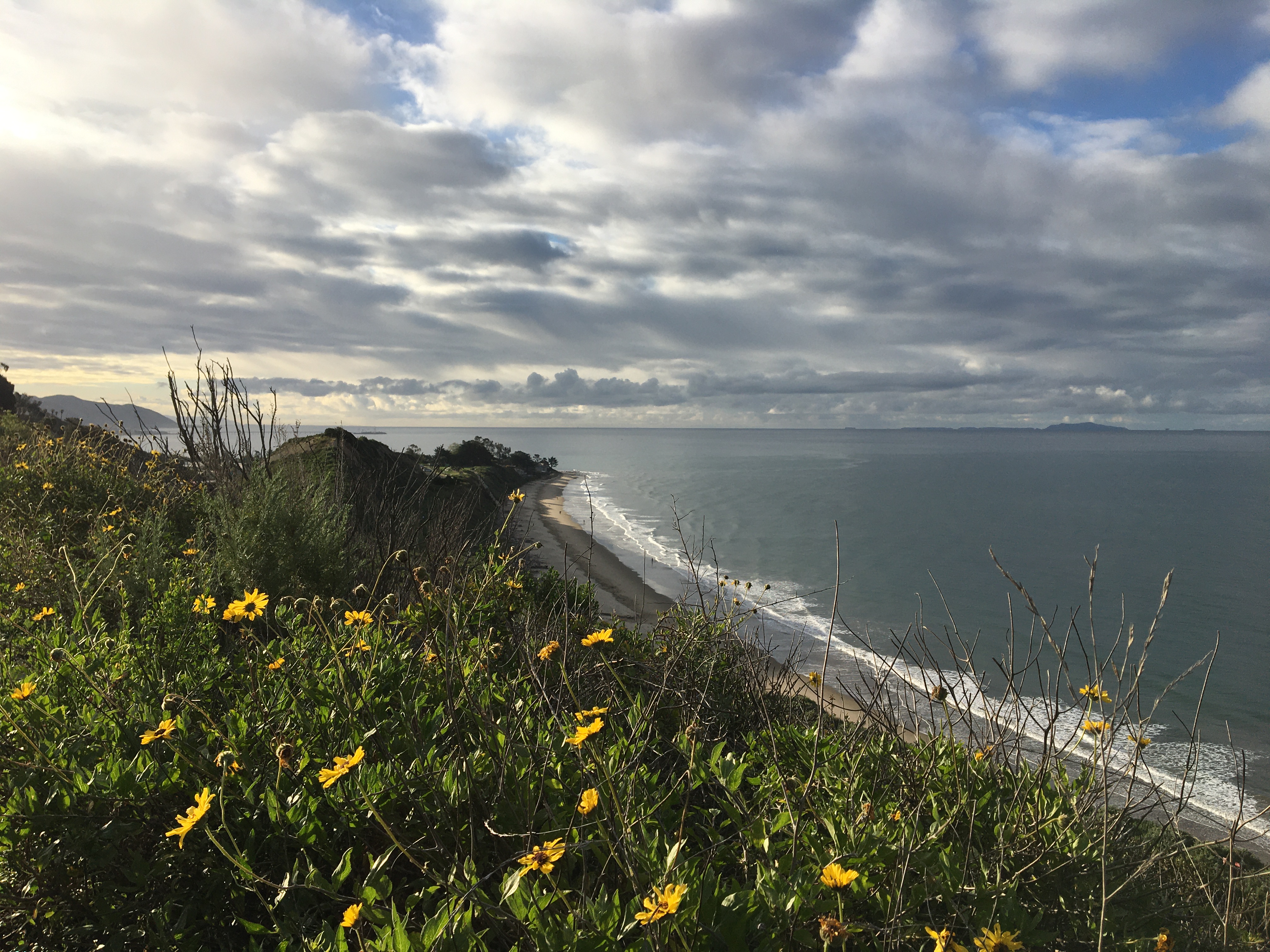City of Carpinteria Will Take Over Rincon Bluffs Preserve
Escrow Closing on ‘Priceless’ Land Trust Property

The Rincon Bluffs Preserve, a scenic oceanfront property zoned for a destination resort at the eastern edge of Carpinteria, is slated to be transferred this week to the city and managed forever as public open space.
The city is expected to close escrow on Friday on the 22-acre preserve at the junction of Carpinteria Avenue and Highway 150, purchasing it for $945,000 from the Land Trust for Santa Barbara County, a nonprofit preservationist group.
“This is much more than a local park: This is a regional treasure,” Matt Roberts, Carpinteria’s parks and recreation director, said this week. “It’s a very significant addition to the nature and trail network in Carpinteria.”
On Tuesday, the county Board of Supervisors approved the final $145,000 for the purchase; the money comes from funds that offshore oil and gas projects provide for coastal resource enhancement. The state Coastal Conservancy and Natural Resources Agency contributed the remaining $800,000.
With the Rincon Bluffs in hand, Roberts said, the city hopes nearly to complete a five-mile public hiking and biking trail from the Carpinteria Salt Marsh Reserve east through the city’s Tar Pits Park and Carpinteria Bluffs Nature Preserve to the county’s Rincon Beach Park.
Ted Rhodes, president of Citizens for the Carpinteria Bluffs, a nonprofit group that was formed in 1996, said he felt fortunate to live in a small town with so much parkland.
“Time and time again, Carpinterians demonstrate how much they value open space and this beautiful natural environment that we live in,” he said. “The community remains very strong about saving more of the bluffs.”
At the close of escrow on Friday, the city will convey a conservation easement to the Land Trust, ensuring that the Rincon Bluffs can never be developed. The trust purchased the property in 2017 for $6 million in county and state grants and local donations. With a conservation easement, the land is worth much less — but to the community, Roberts said, “It’s priceless.”
For decades, Carpinterians fought off developers’ proposals for hotels, business parks, housing tracts, and oil refineries on the bluffs. Arturo Tello, a Carpinteria landscape painter and former president of the citizens’ group, recalled this week how more than 3,000 donors, many of them schoolchildren and businesses armed only with collection cans, helped save the 52-acre Bluffs Nature Preserve. The property was purchased by the Land Trust in 1998 for $3.9 million, and the city took ownership in 2000.
More than 1,400 individual donors stepped up to help save the Rincon Bluffs. For Carpinterians, Tello said, it’s all been “like winning the lottery, for sure.”
“Let’s not look at this as an opportunity to own something,” he said. “It’s an opportunity to give ourselves to something sacred. I have a firm belief that we can consecrate a place, and the way we do that is with our attention, our love and our presence.”

Tello said he paints on the bluffs “any day I can get out there,” using the eucalyptus trees and dirt paths as a foreground for the shifting light that plays on the land and the sea.
“This place is brimming with life,” Tello said.
In addition to a trail, the city plans to build a visitor parking lot, restroom, outdoor amphitheater, and coastal overlooks at the Rincon Bluffs, Roberts said. Non-native vegetation will be replaced with native plants such as coastal sage and coastal scrub. The Land Trust will monitor and enforce the terms of the conservation easement. A $1 million endowment provided by the trust will help fund the improvements.
In all, the land generally known as the Carpinteria Bluffs covers about 150 acres east of City Hall. Private property there includes a golf driving range, a corporate office campus, and a former Chevron oil and gas processing plant that is being decommissioned.
“There might be opportunities to strengthen this coastal open space network in the future,” Roberts said.
Melinda Burns is a freelance journalist based in Santa Barbara.




You must be logged in to post a comment.